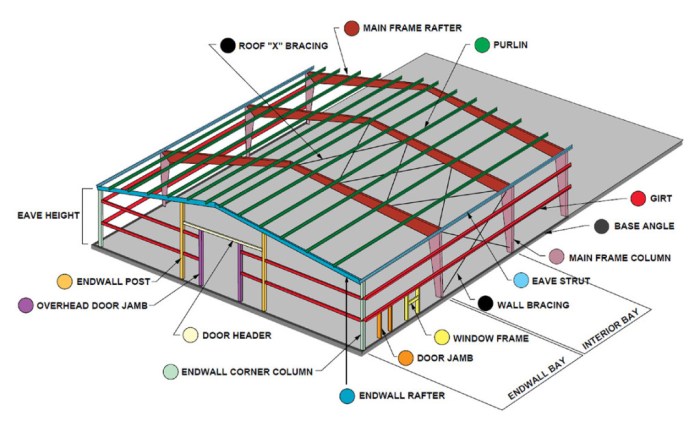Woodwork, a craft that has captivated humans for centuries, is a testament to our ingenuity and creativity. From humble beginnings to the intricate masterpieces of today, woodworking has evolved alongside human civilization, reflecting our evolving needs and artistic sensibilities. It’s a craft that invites us to connect with nature, to transform raw materials into functional and beautiful objects, and to leave a lasting mark on the world.
Whether you’re drawn to the precision of furniture making, the expressive freedom of carving, or the elegant curves of woodturning, woodworking offers a pathway to self-discovery, artistic fulfillment, and a tangible legacy.
Woodwork as a Craft

Woodworking is an ancient craft that has been practiced for centuries, dating back to the Stone Age. Throughout history, people have relied on woodworking skills to build shelters, tools, furniture, and other essential items. From the simple hand tools used by early civilizations to the advanced machinery employed in modern workshops, woodworking has evolved alongside human ingenuity and technological advancements.
The History of Woodworking
Woodworking has a rich and diverse history, with different cultures developing unique techniques and traditions. In ancient Egypt, skilled artisans used woodworking to create elaborate furniture, sarcophagi, and decorative objects. The Greeks and Romans were known for their sophisticated carpentry skills, constructing impressive structures and furniture. In the Middle Ages, woodworking played a crucial role in building churches, castles, and other grand structures. During the Renaissance, the craft experienced a resurgence, with artists and craftsmen using woodworking to create intricate sculptures, furniture, and decorative elements.
Types of Woodworking Tools
Woodworking tools encompass a wide range of instruments, each designed for a specific purpose. Here are some of the most common types:
- Hand Tools: These tools are essential for basic woodworking tasks and include:
- Saw: Used for cutting wood into various shapes and sizes.
- Hammer: Used for driving nails and other fasteners.
- Chisel: Used for shaping and carving wood.
- Plane: Used for smoothing and shaping wood surfaces.
- Screwdriver: Used for driving and removing screws.
- Mallet: Used for striking chisels and other tools.
- Power Tools: These tools provide greater power and speed for woodworking tasks. Some common examples include:
- Power Drill: Used for drilling holes in wood.
- Router: Used for shaping and cutting edges in wood.
- Table Saw: Used for cutting wood into precise lengths and shapes.
- Jointer: Used for creating flat and straight edges on wood.
- Planer: Used for smoothing and flattening wood surfaces.
Traditional Woodworking Techniques
Traditional woodworking techniques have been passed down through generations, relying on hand tools and time-tested methods. These techniques emphasize precision, craftsmanship, and a deep understanding of wood properties. Some common examples include:
- Hand-Cut Joinery: This technique involves using hand tools to create precise joints that fit together without the need for nails or screws. Examples include dovetail joints, mortise and tenon joints, and finger joints.
- Turning: This technique involves shaping wood on a lathe, creating round or cylindrical objects like bowls, spindles, and legs for furniture.
- Carving: This technique involves using hand tools to shape and decorate wood, creating sculptures, decorative elements, and functional objects.
Benefits of Learning Woodworking
Learning woodworking offers numerous benefits, both practical and personal:
- Creative Expression: Woodworking provides a canvas for creativity, allowing individuals to design and build unique pieces that reflect their personal style and imagination.
- Problem-Solving Skills: Woodworking requires problem-solving skills as you encounter challenges and find solutions to ensure the successful completion of projects.
- Practical Skills: Woodworking skills are valuable in everyday life, from repairing furniture to building custom shelves or other household items.
- Stress Relief: The process of woodworking can be therapeutic, providing a calming and satisfying outlet for stress and anxiety.
Safety in Woodworking
Safety is paramount in woodworking, as the use of sharp tools and machinery can pose potential risks. Here are some essential safety tips:
- Wear Proper Safety Gear: Always wear safety glasses, ear protection, and a dust mask to protect your eyes, ears, and respiratory system from dust and debris.
- Use Sharp Tools: Dull tools can be more dangerous than sharp ones, as they require more force to use, increasing the risk of slips and accidents.
- Keep Work Area Clean: A cluttered workspace can lead to tripping hazards and other accidents. Always keep your work area clean and organized.
- Follow Tool Instructions: Carefully read and understand the instructions for all tools before using them. Use the tools as intended and never attempt to modify them.
- Be Aware of Surroundings: Always be aware of your surroundings and the movement of others in the workspace. Avoid distractions and maintain focus on the task at hand.
Types of Woodwork

Woodworking encompasses a wide array of crafts, each with its own unique techniques, materials, and aesthetic appeal. Understanding the different types of woodworking helps you appreciate the versatility and beauty of this craft.
Furniture Making
Furniture making is a branch of woodworking that focuses on creating functional and aesthetically pleasing pieces for the home and office. It involves designing, constructing, and finishing furniture items such as chairs, tables, beds, cabinets, and more.
Furniture makers use a variety of materials, including hardwoods like oak, maple, cherry, walnut, and softwoods like pine, cedar, and fir. The choice of wood depends on the desired aesthetic, durability, and budget.
Furniture making techniques include:
- Joinery: This involves using various techniques to connect pieces of wood, such as mortise and tenon, dovetail, and butt joints.
- Carving: Carving adds intricate details and decorative elements to furniture pieces.
- Turning: Turning involves shaping wood on a lathe to create round or cylindrical forms, such as legs, spindles, and tabletops.
- Finishing: This involves applying stains, paints, varnishes, or other finishes to protect and enhance the wood’s natural beauty.
Carving
Wood carving is an art form that involves shaping wood using hand tools to create three-dimensional objects or designs. It encompasses various styles, ranging from intricate and detailed sculptures to simple and functional objects.
Carving techniques include:
- Relief carving: Involves carving designs into the surface of wood, creating raised or recessed images.
- Round carving: This technique creates fully three-dimensional sculptures, often representing animals, figures, or abstract forms.
- Chip carving: Involves removing small chips of wood to create geometric patterns and designs.
Carvers use a variety of tools, including knives, chisels, gouges, and mallets. The choice of wood depends on the desired effect, durability, and carving style. Hardwoods like oak, maple, and cherry are often preferred for their strength and grain patterns.
Turning
Wood turning involves shaping wood on a lathe to create symmetrical objects with round or cylindrical forms. It is a versatile technique used to create a wide range of items, from bowls and plates to furniture legs and spindles.
Turning techniques include:
- Rough turning: Involves shaping the wood into a basic form using roughing gouges.
- Finishing turning: This involves refining the shape and adding details using various turning tools, such as skew chisels, parting tools, and spindle gouges.
- Spindle turning: Creates long, slender objects like legs, spindles, and dowels.
- Bowl turning: Involves creating hollow, bowl-shaped objects.
Turners often use hardwoods like maple, cherry, and walnut, which are known for their strength and grain patterns. Softwoods like pine and cedar can also be used for certain projects.
Woodworking Materials

Wood is the primary material used in woodworking, and understanding its properties is crucial for success. Different types of wood have varying characteristics that make them suitable for specific applications.
Properties of Wood
The properties of wood are influenced by factors such as the species, growth conditions, and age of the tree. These properties determine its suitability for different woodworking projects.
- Grain: The pattern formed by the wood fibers, which affects the wood’s appearance and strength. Straight grain is generally stronger than irregular grain.
- Hardness: Measured by its resistance to indentation or scratching. Hardwoods are generally harder than softwoods.
- Density: The weight of the wood per unit volume. Dense woods are typically stronger and more durable.
- Color: Varies widely depending on the species and can be influenced by factors like sun exposure.
- Workability: How easily the wood can be cut, shaped, and finished. Some woods are easier to work with than others.
- Stability: The wood’s tendency to warp, shrink, or swell with changes in moisture content. Some woods are more stable than others.
Hardwoods vs. Softwoods
The terms “hardwood” and “softwood” refer to the type of tree from which the wood is derived, not its actual hardness.
- Hardwoods come from deciduous trees, which lose their leaves in the fall. They tend to be denser, harder, and more durable than softwoods. Examples include oak, maple, cherry, walnut, and mahogany.
- Softwoods come from coniferous trees, which have needles and cones. They are typically lighter, softer, and less expensive than hardwoods. Examples include pine, spruce, fir, and cedar.
Choosing the Right Wood
The best wood choice for a project depends on its intended use, aesthetic preferences, and budget.
- Furniture: Hardwoods like oak, maple, and walnut are often used for furniture due to their strength, durability, and attractive grain patterns.
- Flooring: Hardwoods like oak, maple, and hickory are popular for flooring due to their durability and resistance to wear and tear.
- Outdoor Projects: Woods like cedar and redwood are naturally resistant to rot and decay, making them suitable for outdoor projects like decks and fences.
- Carving: Woods like basswood and butternut are soft and easy to carve, making them ideal for carving projects.
Selecting and Preparing Wood
When selecting wood for a project, consider its quality, moisture content, and overall appearance.
- Quality: Look for wood that is free of knots, cracks, and other defects.
- Moisture Content: Wood should be properly dried to prevent warping and shrinkage. The ideal moisture content for woodworking is typically between 6% and 8%.
- Appearance: Consider the grain pattern, color, and overall aesthetic appeal of the wood.
Once you have selected your wood, it is important to prepare it for use. This may involve:
- Planing: Smoothing the surface of the wood with a hand plane or power planer.
- Sanding: Removing any rough edges or imperfections with sandpaper.
- Jointing: Creating a flat and straight edge on the wood using a jointer.
Wood Finishes
Wood finishes protect and enhance the appearance of wood.
- Stains: Change the color of the wood without obscuring its grain.
- Varnishes: Provide a clear, protective coating that enhances the natural beauty of the wood.
- Polyurethanes: Offer a durable, water-resistant finish that is suitable for high-traffic areas.
- Lacquer: A fast-drying, durable finish that is often used on furniture.
- Oil Finishes: Penetrate the wood, providing a natural-looking finish that enhances its grain.
Woodworking Techniques
Woodworking techniques are the foundation of crafting beautiful and functional pieces. They encompass a wide range of skills, from precise measuring and cutting to expert joinery and finishing. Mastering these techniques will allow you to create anything from simple furniture to intricate sculptures.
Measuring and Cutting Wood
Accurate measuring and cutting are crucial for any woodworking project. You need to ensure that your pieces fit together perfectly, especially when creating intricate designs.
Here are the steps involved:
- Determine the required dimensions: Carefully measure the dimensions of your project and transfer them to the wood using a pencil or marking tool. Ensure the measurements are accurate, as any errors will be amplified in the final product.
- Choose the right cutting tool: Select the appropriate cutting tool based on the thickness and type of wood, as well as the desired cut. For example, a hand saw is ideal for straight cuts on thinner wood, while a circular saw is better suited for thicker pieces. A jigsaw can be used for curved cuts.
- Cut the wood: Make sure the cutting tool is sharp and stable before making the cut. Follow the markings carefully and apply even pressure to avoid any deviations.
- Check for accuracy: Once the cut is made, verify its accuracy by measuring the piece again. If necessary, make adjustments until the desired dimensions are achieved.
Joinery Techniques
Joinery techniques are methods for joining pieces of wood together securely and aesthetically. They are essential for creating strong and durable structures, as well as for adding visual appeal to your projects.
There are many different joinery techniques, each with its own advantages and disadvantages. Here are a few examples:
- Butt Joint: This is the simplest joint, where two pieces of wood are joined end-to-end. While easy to execute, it is not very strong and can be prone to separation.
- Lap Joint: This joint involves overlapping two pieces of wood, with one piece cut to create a recess for the other. This creates a stronger joint than a butt joint but is still susceptible to separation.
- Mortise and Tenon Joint: This is a strong and durable joint that involves creating a rectangular hole (mortise) in one piece of wood and a corresponding projection (tenon) on the other. This joint is often used for furniture making and construction.
- Dovetail Joint: This is a decorative and strong joint that involves interlocking wedge-shaped pieces of wood. It is often used for drawers and boxes, as it provides both strength and aesthetic appeal.
Sanding and Finishing Wood
Sanding and finishing are essential steps in woodworking that create a smooth and polished surface, enhancing the beauty and durability of the wood.
- Sanding: This involves using sandpaper to remove any imperfections, such as rough edges, scratches, or tool marks. Start with a coarser grit sandpaper and gradually progress to finer grits to achieve a smooth finish. Different types of sandpaper are available, including sheet sandpaper, sanding blocks, and sanding discs.
- Finishing: This involves applying a protective coating to the wood to enhance its appearance and durability. Common finishes include paints, stains, varnishes, and oils. Each finish has its own properties and effects on the wood. For example, paint provides a solid color and protective layer, while stain enhances the natural grain of the wood. Varnish creates a glossy finish that protects the wood from moisture and scratches, while oil penetrates the wood and provides a natural finish.
Creating Woodworking Designs
Woodworking designs can range from simple and functional to intricate and artistic. You can find inspiration from various sources, such as books, magazines, online resources, and even everyday objects.
- Sketching: Sketching your ideas on paper allows you to visualize the design and experiment with different shapes and proportions. Use pencils, pens, or even computer software to create your sketches.
- Creating 3D Models: 3D modeling software can be used to create realistic representations of your woodworking designs. This allows you to visualize the project in detail before you start building it.
- Inspiration from Nature: Nature is a great source of inspiration for woodworking designs. Observe the shapes, textures, and patterns found in plants, animals, and landscapes. These natural forms can be translated into unique and beautiful woodworking projects.
- Experimenting with Materials: Different types of wood have unique properties, such as grain patterns, color, and hardness. Experiment with different woods to create different effects and textures in your woodworking projects.
Step-by-Step Guide for a Simple Woodworking Project
Let’s create a simple wooden shelf. This project will demonstrate the basic woodworking techniques we’ve discussed.
- Materials:
- Wood boards (2 x 4 inches, 10 inches long – 2 pieces)
- Wood board (2 x 4 inches, 12 inches long – 1 piece)
- Wood screws
- Wood glue
- Sandpaper (medium and fine grit)
- Wood finish (optional)
- Cut the wood:
- Cut two 2 x 4 inch boards to 10 inches long.
- Cut one 2 x 4 inch board to 12 inches long.
- Assemble the shelf:
- Place the two 10-inch boards parallel to each other, about 1 inch apart.
- Place the 12-inch board on top of the two shorter boards, perpendicular to them, so it rests on the ends of the shorter boards.
- Use wood glue and screws to secure the boards together. Apply wood glue to the joining surfaces and then screw the boards together. Ensure the screws are long enough to go through all the layers of wood and into the supporting boards.
- Sand the shelf:
- Sand the entire surface of the shelf with medium-grit sandpaper to remove any rough edges or imperfections.
- Follow with fine-grit sandpaper to achieve a smooth finish.
- Finish the shelf:
- Apply a wood finish, such as paint, stain, varnish, or oil, to protect and enhance the appearance of the wood. Follow the manufacturer’s instructions for application and drying time.
Woodworking in the Modern World
Woodworking, a craft rooted in tradition, has been significantly transformed by the advent of modern technology. The integration of computer-aided design (CAD) and power tools has revolutionized the way woodworkers approach their craft, offering both new possibilities and challenges.
The Impact of Technology on Woodworking
The impact of technology on woodworking is undeniable. From the introduction of power tools in the early 20th century to the widespread adoption of CAD software in recent decades, technology has significantly altered the landscape of woodworking. Power tools have increased efficiency and precision, while CAD software has facilitated complex designs and precise execution.
Computer-Aided Design (CAD) in Woodworking
Computer-aided design (CAD) software has become an indispensable tool for modern woodworkers. CAD software allows woodworkers to create detailed 2D and 3D models of their projects, enabling them to visualize their designs, make precise measurements, and generate cutting lists.
CAD software has streamlined the design process, allowing woodworkers to experiment with different designs and materials virtually before committing to physical fabrication.
Advantages and Disadvantages of Power Tools in Woodworking
Power tools have revolutionized woodworking by providing increased efficiency, precision, and versatility. However, they also present certain challenges.
Advantages of Power Tools
- Increased Efficiency: Power tools significantly reduce the time and effort required for woodworking tasks, allowing woodworkers to complete projects more quickly.
- Enhanced Precision: Power tools provide greater accuracy and consistency in cutting, shaping, and finishing wood, resulting in more precise and professional-looking results.
- Versatility: The wide range of power tools available allows woodworkers to tackle a variety of tasks, from basic cutting and sanding to intricate joinery and carving.
Disadvantages of Power Tools
- Safety Concerns: Power tools can be dangerous if not used properly, requiring proper training and safety precautions.
- Cost: Power tools can be expensive, especially for professional-grade equipment.
- Dependence: Over-reliance on power tools can lead to a decline in hand tool skills and an inability to work without them.
Modern Woodworking Trends
Modern woodworking trends reflect a fusion of traditional techniques and contemporary aesthetics. Here are some notable examples:
- Sustainable Woodworking: Using reclaimed wood, sustainably harvested timber, and eco-friendly finishes is gaining popularity.
- Minimalist Design: Clean lines, simple forms, and a focus on functionality characterize minimalist woodworking.
- Fusion of Styles: Woodworkers are blending traditional techniques with modern materials and design elements, creating unique and eclectic pieces.
- Customization: The rise of online platforms and maker spaces has empowered individuals to design and create custom woodworking projects.
Contemporary Woodworking Project
A contemporary woodworking project could involve creating a modular shelving unit made from reclaimed wood and metal accents. The unit would feature a minimalist design with clean lines and a focus on functionality. The reclaimed wood would add a rustic touch, while the metal accents would provide a modern contrast.
The project would incorporate modern techniques, such as laser cutting for precise metalwork and CNC routing for intricate wood details. The modular design would allow for customization and adaptability, enabling users to create unique configurations to suit their needs.
Last Point
Woodworking is more than just a craft; it’s a journey of exploration, learning, and self-expression. It’s a chance to tap into our innate creativity, to connect with our heritage, and to create something truly unique. As you delve into the world of woodworking, you’ll discover the joy of crafting, the satisfaction of creating something with your own hands, and the enduring legacy of this timeless art.
Key Questions Answered
What are the essential tools for beginners in woodworking?
A basic set of woodworking tools for beginners includes a hand saw, a hammer, a screwdriver, measuring tape, a pencil, a chisel, a block plane, and sandpaper.
What type of wood is best for beginners?
Softwoods like pine and cedar are generally easier to work with for beginners due to their softer nature and forgiving qualities.
How do I prevent wood from warping?
To prevent wood from warping, it’s essential to acclimate the wood to the environment where it will be used, ensure the wood is properly dried, and avoid exposing it to extreme temperature changes.
What are some safety tips for woodworking?
Always wear safety glasses, use proper hand protection, and ensure your workspace is well-lit and free of clutter. Never use power tools without proper training and safety precautions.
Woodworking is a craft that requires patience, skill, and a good set of tools. If you’re looking to learn more about woodworking, or maybe even take your skills to the next level, you might want to check out tedswoodworking review.
It’s a great resource for woodworking projects, plans, and tutorials. Whether you’re a beginner or an experienced woodworker, you’re sure to find something helpful on the site.

